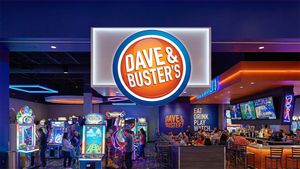Types of industrial pipelines for a steam power plant

The construction and operation of coal-fired or steam power plants involve various metal pipelines, each selected based on the working environment and functional requirements. Below is a detailed introduction to the metal pipelines required for each system:
1. Boiler System Pipelines
Materials: Chromium-molybdenum alloy steel (e.g., ASTM A335 P11/P22/P91/P92), austenitic stainless steel (e.g., TP304H, TP347H).
Applications: High-temperature and high-pressure sections such as boiler furnaces, superheaters, and reheaters. Chromium-molybdenum steel, containing chromium (resistant to high-temperature oxidation) and molybdenum (enhances strength), is suitable for steam temperatures exceeding 600°C. Austenitic stainless steel is used in even higher-temperature zones, such as Super304H and HR3C alloys, which can withstand temperatures above 650°C.
2. Main Steam and Reheat Steam Pipelines
Materials: Martensitic heat-resistant steel (e.g., P91/P92, T91/T92), with some using nickel-based alloys (e.g., Inconel 617).
Applications: Transporting high-temperature, high-pressure steam to turbines. P91/P92 steel, with high chromium (9–12%), molybdenum, and vanadium content, exhibits excellent creep resistance and is suitable for steam conditions up to 625°C and 30MPa.
3. Condensate and Feedwater System Pipelines
Materials: Low-carbon steel (ASTM A106 Gr.B, with anti-corrosion coatings), austenitic stainless steel (304/316L).
Applications: Transporting low-temperature, low-pressure water from the condenser outlet to the deaerator. Stainless steel is used in corrosion-sensitive areas (e.g., seawater cooling systems), while carbon steel requires epoxy lining or galvanization for corrosion protection.
4. Flue Gas Treatment System Pipelines
Materials: Duplex stainless steel (2205, 2507), nickel-based alloys (C-276), rubber/fiberglass-lined carbon steel.
Applications: Inlet and outlet pipelines of absorption towers in wet flue gas desulfurization (FGD) systems. Duplex stainless steel resists chloride-induced stress corrosion, nickel-based alloys are used in highly acidic environments, and lined pipelines offer cost-effective corrosion resistance.
5. Fuel Transport Pipelines
Materials: Wear-resistant high-chromium cast iron (Cr26), ceramic- or silicon carbide-lined carbon steel pipes.
Applications: Coal particle transport pipelines requiring resistance to abrasive wear. Ceramic linings extend pipeline lifespan, especially at bends and junctions.
6. Cooling Water System Pipelines
Materials: Copper-nickel alloys (90/10, 70/30), galvanized steel, 316L stainless steel.
Applications: Condenser cooling water pipes. Copper-nickel alloys resist seawater corrosion, galvanized steel is used in freshwater systems, and stainless steel is employed in high-chloride environments.
7. Auxiliary System Pipelines
Compressed air/lubrication systems: Carbon steel (ASTM A53) or 304 stainless steel.
Ammonia injection systems (SCR denitrification): 316L stainless steel (resistant to ammonia corrosion).
Key Factors in Material Selection
Temperature & Pressure: High-temperature, high-pressure environments require heat-resistant alloys, while low-temperature conditions focus on toughness.
Corrosive Media: Acidic flue gas necessitates high-alloy materials; seawater environments require copper-nickel or duplex stainless steel.
Cost-Effectiveness: Lined pipelines offer good value in corrosive environments, while high-alloy steels are used in critical sections.
Example Material Grades
P91 Steel: 9Cr-1Mo-V-Nb, used in main steam pipelines.
TP347H: 18Cr-11Ni-Nb, used in boiler superheaters.
Inconel 625: Ni-Cr-Mo, used in extreme corrosion environments.
Material selection for coal-fired power plants requires balancing performance, cost, and maintenance. With the advancement of ultra-supercritical technology, future applications may increasingly utilize new heat-resistant alloys (e.g., G115 steel) to improve efficiency.
Media Contact
Company Name: EZ STEEL INDUSTRIAL CO., LTD.
Email: Send Email
Phone: +86 188 7402 8402
Country: China
Website: https://www.ezindustrialpipe.com/
More News
View More




Recent Quotes
View More
Quotes delayed at least 20 minutes.
By accessing this page, you agree to the Privacy Policy and Terms Of Service.